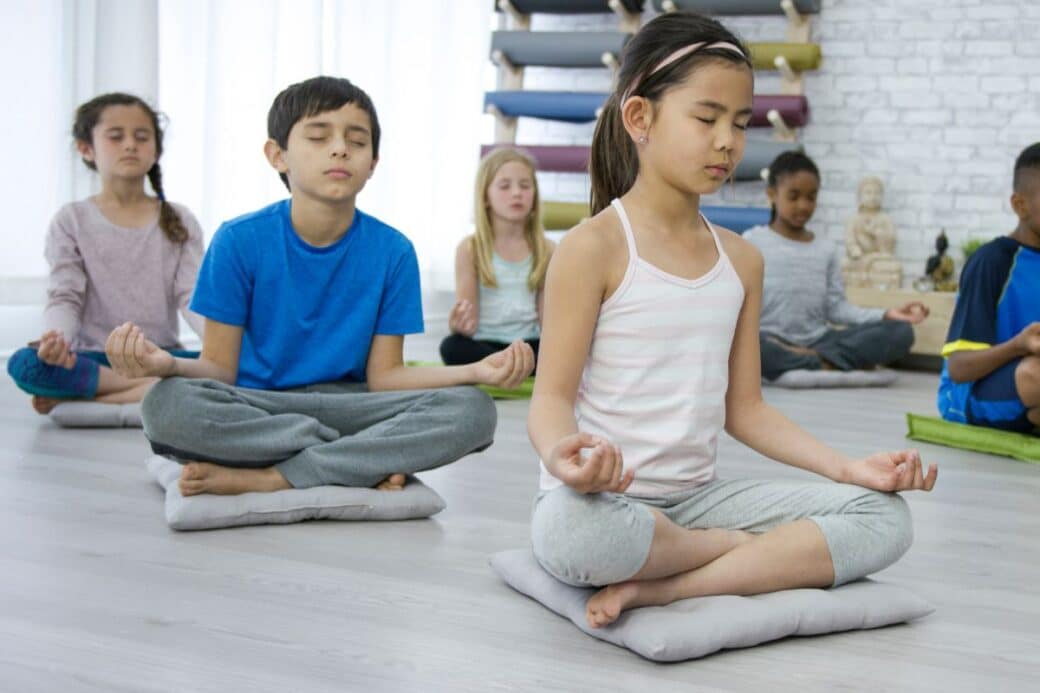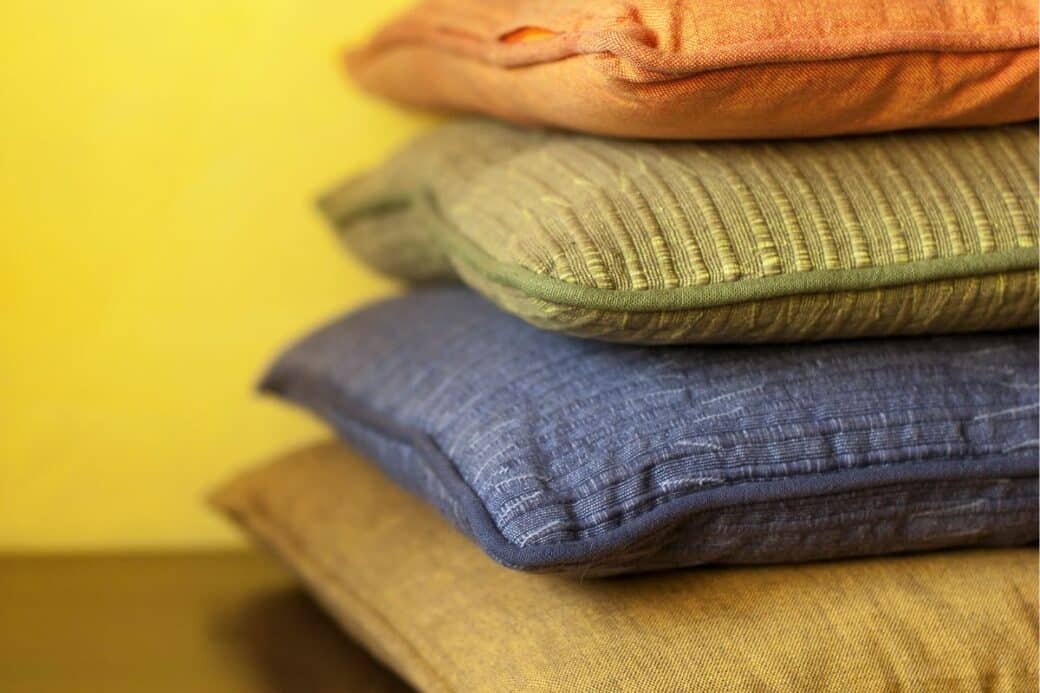Imagine a world where meditation is effortlessly integrated into your daily routine, without the need for mats or cushions. This article explores the concept of embracing simplicity in your meditation practice, allowing you to find stillness and inner peace wherever you may be. Whether you’re at home, in the office, or on-the-go, discover the beauty of meditation without the constraints of a mat, and unlock a world of tranquility that exists within you. Let go of the complexities and embrace the simplicity of this transformative practice.

Meditation Without Mat: Understanding Meditation Without a Mat
The Concept Behind Mat-free Meditation
Meditation has been practiced for centuries, and it is often associated with using a comfortable mat or cushion to create a dedicated space for inner reflection and stillness. However, there is a growing trend towards mat-free meditation, which emphasizes simplicity and the ability to meditate anywhere, at any time, without the need for external props. The concept behind mat-free meditation is to rely solely on your own self and internal focus, rather than being dependent on external support or rituals. By letting go of the traditional mat, practitioners can tap into a deeper sense of self-awareness and create a more intimate connection with their inner selves.
Impacts of Rituals and Props in Meditation
Rituals and props, such as using a meditation mat, can serve as valuable tools for creating a conducive environment for meditation. However, they can also inadvertently become crutches that hinder our progress. By relying too heavily on external aids, we risk becoming dependent on them to achieve a meditative state. Mat-free meditation challenges us to let go of these external props and rituals and cultivate a sense of independence and self-reliance. By doing so, we open ourselves up to a deeper level of mindfulness and achieve a greater sense of freedom and flexibility in our practice.
Benefits of Meditating Without a Mat
Developing Flexibility in Practice
Meditating without a mat allows for greater flexibility in your meditation practice. Instead of being confined to a specific space, you can meditate anywhere, whether it’s in your living room, office, or even outside in nature. This flexibility enables you to adapt your practice to your daily life and schedule, making it easier to establish a consistent meditation routine. Without the need for a mat, you can seamlessly integrate meditation into your everyday activities, allowing for a more holistic approach to mindfulness.
Gaining Independence From External Props
When you meditate without a mat, you free yourself from the need for external props to achieve a meditative state. By letting go of this reliance, you become more self-reliant and develop a deeper connection with your inner self. This newfound independence cultivates a sense of empowerment and strengthens your ability to find stillness and peace from within, regardless of your external environment. Ultimately, meditating without a mat helps you tap into the infinite reservoir of tranquility within yourself, allowing you to find solace and inner balance wherever you are.
Increasing Accessibility of Meditation
For many individuals, the cost of purchasing a meditation mat can be a barrier to starting or maintaining a regular meditation practice. By embracing mat-free meditation, we can make the practice more accessible and inclusive to a wider audience. Those who may not have the financial means to invest in a mat can still experience the transformative benefits of meditation. By removing the requirement for a mat, we break down the financial barriers and open the doors to a more diverse and inclusive meditation community.

How to Begin Meditating Without a Mat
Finding Comfort in Sitting Positions
When meditating without a mat, finding a comfortable sitting position is essential. Experiment with different positions such as cross-legged, kneeling, or sitting on a cushion or pillow. The key is to find a position that allows your spine to be straight and aligned. This alignment promotes good posture and facilitates deep breathing, enabling you to enter a relaxed and focused state of meditation. Gradually explore different positions and discover what works best for your body and personal preference.
Adjusting the Surrounding Environment
Creating a serene and conducive environment is important for a successful mat-less meditation practice. Choose a quiet space where you feel calm and relaxed. Clear any clutter or distractions from the area to cultivate a sense of tranquility. Dim the lights or use soft, soothing lighting to create a peaceful atmosphere. Consider using aromatherapy or playing gentle music to enhance the ambiance. By adjusting the surrounding environment, you can create an oasis of calm that supports your meditation practice.
Useful Tips for Comfortable Floor Sitting
Importance of Proper Posture
Maintaining proper posture is crucial when practicing floor sitting meditation without a mat. Sit with a straight back, shoulders relaxed, and chin slightly tucked in. Align your head, neck, and spine to promote optimal energy flow and prevent discomfort during meditation. Engaging your core muscles can help support your posture and prevent slouching. Remember to relax your jaw, facial muscles, and hands to release tension and fully embrace the present moment.
Various Sitting Positions Suitable for Meditation
There are several sitting positions you can explore when meditating without a mat. Cross-legged sitting, also known as the Lotus or Half-Lotus position, is a popular choice for many practitioners. If this position is uncomfortable, you can modify it by placing one foot inside the opposite thigh, known as the Easy Pose. Another option is kneeling on a cushion or folded blanket, which helps alleviate pressure on the knees. Experiment with different positions and props until you find the one that feels most comfortable and supportive for your body.
Leveraging Household Items for Support while Meditating
Utilizing Pillows for Cushioning
If sitting directly on the floor is uncomfortable, pillows can be a great alternative for cushioning. Use one or multiple pillows to create a supportive base for your hips and buttocks. This extra elevation helps maintain proper alignment and reduces strain on your joints and muscles. Play around with different pillow arrangements to find the height and firmness that provides optimal comfort for your meditation practice.
Using Furniture for Support
Don’t underestimate the power of furniture when it comes to supporting your mat-less meditation practice. Chairs, benches, or even the edge of your bed can provide stability and comfort during your meditation sessions. Choose a chair with a straight back and sit towards the edge, keeping your feet flat on the floor. This position allows for a straight spine and supports good posture. Alternatively, placing a cushion on a sturdy bench can provide a similar effect, allowing you to maintain an upright position while still enjoying the benefits of floor sitting.
Introducing Movement in Your Mat-less Meditation
Walking Meditation
Mat-free meditation doesn’t always have to be a static practice. Walking meditation offers a unique way to cultivate mindfulness and connect with your body in motion. Find a quiet space, preferably outdoors, where you can walk slowly and attentively. Focus on the movement of your feet, the sensation of each step, and the sounds and smells around you. Walking meditation can bring a sense of grounding and tranquility, combining the benefits of both meditation and physical exercise.
Adding Simple Yoga Stretches
Incorporating gentle yoga stretches into your mat-less meditation practice can help enhance flexibility, release tension, and prepare your body for stillness. Perform simple stretching exercises that target areas of tightness, such as the neck, shoulders, and hips. Tension-releasing stretches like forward folds, seated twists, and gentle neck movements help create a sense of relaxation and ease in the body. Remember to listen to your body and only go as far as feels comfortable for you.
Overcoming Challenges of Mat-less Meditation
Addressing Physical Discomfort
Meditating without a mat can sometimes present physical discomfort, especially when sitting on hard surfaces. To address this challenge, consider using additional props like folded blankets or a yoga block to provide cushioning and support. Placing a blanket or cushion under your knees or ankles can help alleviate pressure points and reduce discomfort. Experiment with different props and adjust their positioning until you find the right combination that minimizes physical discomfort and allows for a more focused and comfortable meditation experience.
Dealing with Distractions
Without the defined space provided by a mat, distractions can easily arise during mat-less meditation. To combat this, it’s important to cultivate a strong sense of focus and mindfulness. Begin each session by setting an intention and reminding yourself of the purpose of your meditation practice. If distractions arise, acknowledge them without judgment and gently draw your attention back to your breath or chosen point of focus. Cultivating a non-reactive attitude towards distractions and maintaining a sense of curiosity and openness can help you navigate through them and deepen your meditation practice.
Case Studies: Experiences with Mat-less Meditation
Success Stories of Mat-Free Practitioners
Numerous individuals have successfully embraced mat-less meditation and reaped the benefits of this practice. People of all walks of life, from busy professionals to stay-at-home parents, have found solace and inner peace through the simplicity of mat-free meditation. By integrating their practice seamlessly into their everyday lives, they have experienced increased mindfulness, improved focus, and reduced stress levels. These success stories demonstrate that we don’t need fancy props or rituals to find stillness within ourselves. The power of meditation lies within each of us, waiting to be tapped into.
Lessons Learned Along the Way
While mat-less meditation offers tremendous benefits, it is not without its challenges. Practitioners have learned valuable lessons throughout their journey, such as the importance of patience and self-compassion. They have discovered that consistency and regularity are key to unlocking the full potential of their meditation practice. They have also realized that finding comfort and inner peace is a deeply personal process, and what works for one person may not work for another. These lessons serve as reminders that meditation is an ongoing exploration, constantly evolving and adapting to our unique needs and circumstances.
Promoting Inclusivity Through Mat-less Meditation
Breaking Financial Barriers in Meditation Practice
The cost of purchasing a meditation mat or cushion can be prohibitive for many individuals, preventing them from fully embracing the practice. Mat-less meditation offers a more inclusive alternative that eliminates the financial barrier and allows people from all walks of life to experience the transformative benefits of meditation. By promoting mat-less meditation, we open doors to a wider audience who may have previously felt excluded due to financial constraints. This inclusivity fosters a more diverse and vibrant meditation community, where everyone can find their own path to inner peace and personal growth.
Promoting Meditation to a Wider Audience
Mat-less meditation has the potential to expand the reach of meditation to a wider audience. By emphasizing the simplicity and accessibility of the practice, we can dispel common misconceptions and preconceived notions that meditation requires elaborate rituals or expensive equipment. Through education and awareness, we can inspire more people to embark on their meditation journey, irrespective of their background or current circumstances. Mat-less meditation opens up a world of possibilities and empowers individuals to take charge of their well-being, both physically and mentally.
The Future of Mat-less Meditation
Opportunities for Growth and Evolution
As the popularity of mat-less meditation grows, we can expect to see an expansion of resources and support specifically tailored for this practice. From guided meditations to specialized classes and workshops, there will be an increasing number of opportunities for individuals to explore mat-free meditation in depth. Innovations in technology may also play a role in this evolution, as virtual reality and augmented reality platforms offer immersive meditation experiences that require minimal physical props. The future of mat-less meditation is full of potential, encouraging us to embrace simplicity and unlock the infinite possibilities within ourselves.
Impact on the Global Practice of Meditation
Mat-less meditation has the potential to revolutionize the way meditation is practiced on a global scale. By removing the reliance on external props, it empowers individuals to cultivate a deeper sense of self-awareness and inner peace, regardless of their geographical location or resources. This shift towards simplicity and accessibility has the power to reach diverse communities and bridge cultural divides, making meditation a universal practice that transcends boundaries. Mat-less meditation has the potential to transform the lives of individuals around the world, fostering a collective consciousness of peace, mindfulness, and well-being.
In conclusion, mat-less meditation offers a refreshing approach to the timeless practice of meditation. By letting go of external props and rituals, we open ourselves up to a deeper sense of self-awareness and connect with our inner selves on a more intimate level. The benefits of meditating without a mat include increased flexibility in practice, independence from external props, and greater accessibility to a wider audience. With the right sitting positions, proper posture, and the use of household items for support, mat-less meditation can be both comfortable and effective. By introducing movement through walking meditation and yoga stretches, we can further enhance our practice. Overcoming challenges such as physical discomfort and distractions is possible through patience, self-compassion, and a non-reactive attitude. Mat-less meditation has the potential to promote inclusivity and break financial barriers, making the practice accessible to all. As the future of mat-less meditation unfolds, opportunities for growth, evolution, and a global impact on the practice of meditation become more evident. Embrace the simplicity of mat-less meditation and embark on a journey of self-discovery, inner peace, and mindfulness.




